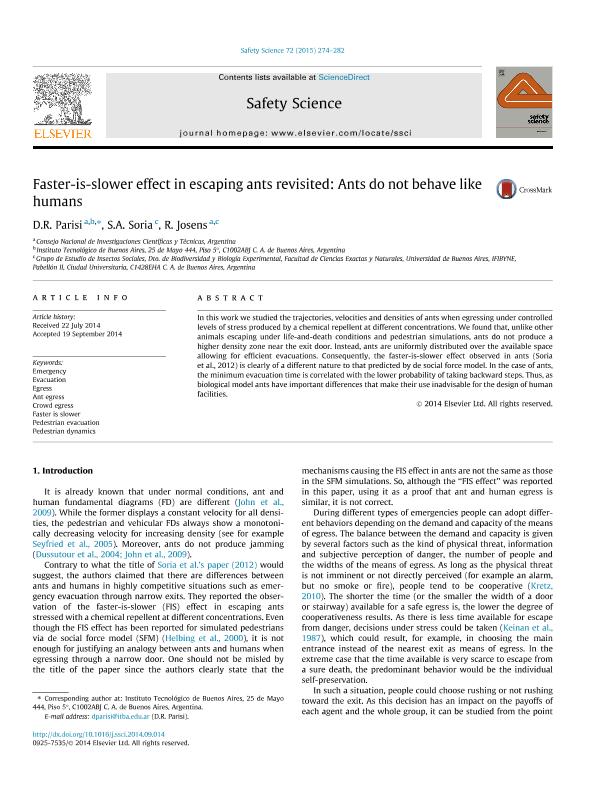Artículo
Faster-is-slower effect in escaping ants revisited: Ants do not behave like humans
Fecha de publicación:
02/2015
Editorial:
Elsevier
Revista:
Safety Science
ISSN:
0925-7535
Idioma:
Inglés
Tipo de recurso:
Artículo publicado
Clasificación temática:
Resumen
In this work we studied the trajectories, velocities and densities of ants when egressing under controlled levels of stress produced by a chemical repellent at different concentrations. We found that, unlike other animals escaping under life-and-death conditions and pedestrian simulations, ants do not produce a higher density zone near the exit door. Instead, ants are uniformly distributed over the available space allowing for efficient evacuations. Consequently, the faster-is-slower effect observed in ants (Soria et al., 2012) is clearly of a different nature to that predicted by de social force model. In the case of ants, the minimum evacuation time is correlated with the lower probability of taking backward steps. Thus, as biological model ants have important differences that make their use inadvisable for the design of human facilities.
Archivos asociados
Licencia
Identificadores
Colecciones
Articulos(IFIBYNE)
Articulos de INST.DE FISIOL., BIOL.MOLECULAR Y NEUROCIENCIAS
Articulos de INST.DE FISIOL., BIOL.MOLECULAR Y NEUROCIENCIAS
Articulos(SEDE CENTRAL)
Articulos de SEDE CENTRAL
Articulos de SEDE CENTRAL
Citación
Parisi, Daniel Ricardo; Soria, Sabrina Andrea; Josens, Roxana Beatriz; Faster-is-slower effect in escaping ants revisited: Ants do not behave like humans; Elsevier; Safety Science; 72; 2-2015; 274-282
Compartir
Altmétricas




